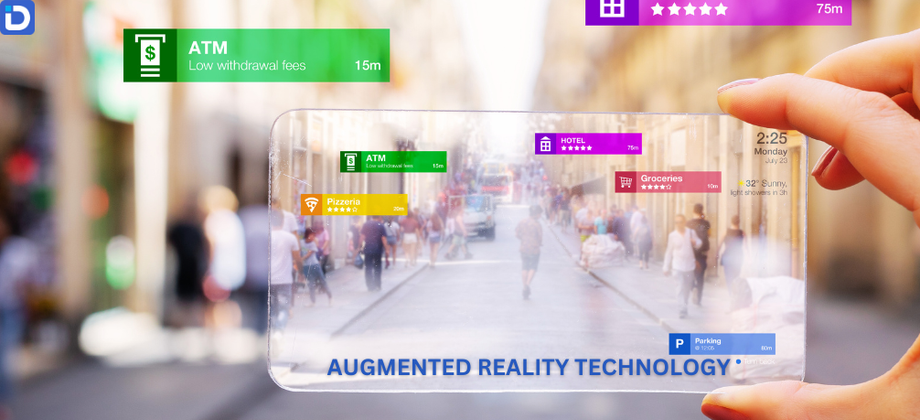Augmented Reality (AR) is a cutting-edge technology that combines digital data and virtual objects on the actual world, improving our perception and interaction with it. It perfectly combines the physical and digital worlds, resulting in immersive experiences that have revolutionised a variety of sectors.
To fully understand the significance of augmented reality, one must first look into its history, evolution, and important technological advances.
The Evolution of Augmented Reality
Augmented reality has been around since the early twentieth century. L. Frank Baum, the creator of "The Wonderful Wizard of Oz," imagined a pair of electronic glasses capable of projecting information into the actual world in 1901.
The greatest advancements in AR, however, occurred in the later part of the twentieth century.
In 1968, Ivan Sutherland, a computer scientist, created the first head-mounted display system known as the "Sword of Damocles."
This early version of augmented reality technology established the groundwork for further breakthroughs in the area. AR applications were first investigated by research institutes and enterprises in the 1990s, particularly in the military and aerospace industries.
AR technology has grown greatly over the years, owing to advances in computer power, graphics processing, and mobile devices.
Technology components that allow AR experiences
The following are the major technology components that allow AR experiences:
1. Tracking Systems: Augmented reality relies on precise tracking of the user's position and orientation in real life. This is accomplished using a variety of techniques such as GPS, inertial sensors, computer vision, and markers.
2. Display Devices: The key display devices for AR include headsets, smartphones, and tablets. They give visual output via displays or wearables such as smart glasses, allowing users to view digital material superimposed on their environment.
3. Computer Vision: To detect objects, surfaces, and markers in the environment, computer vision algorithms analyse and interpret real-time visual data acquired by cameras. This data is then utilised to precisely superimpose virtual material.
4. 3D Graphics and Rendering: To produce realistic virtual objects and animations, AR apps rely on advanced 3D graphics and rendering techniques. To deliver believable AR experiences, these visuals must be smoothly blended with the real-world surroundings.
Augmented Reality Sectors
AR technology has found applications in a variety of sectors, transforming the way we engage with information, entertainment, and daily life
1. Gaming and entertainment: Games such as Pokemon Go and AR-based entertainment experiences provide immersive gaming by superimposing virtual components on top of the actual environment.
2. Education and Training: AR improves learning experiences by delivering interactive and visual material, allowing students to study complicated subjects like anatomy or historical places in a more engaging manner.
3. Healthcare: Augmented reality is being utilised in medical training, surgical planning, and patient education. It allows doctors to see patient data by superimposing it on the body for accurate diagnosis and treatment.
4. Retail and e-commerce: AR lets customers to digitally try on clothes, accessories, or furniture, making purchasing more engaging and personalised.
5. Architecture and Design: Augmented reality (AR) allows architects and designers to visualise their works in real time, assisting customers in understanding and making informed decisions on building or interior design projects.
The Future of Augmented Reality
The future of augmented reality has enormous promise. Wearable gadget advancements, 5G connection, and artificial intelligence will all improve AR experiences. More compact and immersive AR headsets, enhanced real-time object detection capabilities, and seamless integration of AR with Internet of Things (IoT) devices may all be expected.
Conclusion
To summarise, augmented reality has progressed from its early idea to being a transformational technology that improves our vision and interaction with the world around us. It has found applications in diverse industries, revolutionizing gaming, education, healthcare, retail, and more. As AR continues to evolve, we can anticipate even more innovative and immersive experiences that will reshape how we perceive and engage with our surroundings.

